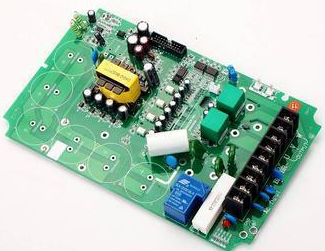After using the smt processing procedure to process the welding technology, cleaning work will be carried out. If the safety cannot be guaranteed after the SMT patching procedure is processed after the smt processing procedure, it should be used as a strict standard. Therefore, the type and characteristics of the detergent should be selected when cleaning, and the integrity and safety of the equipment and process should also be considered when cleaning.
What's in the process of surface mounting of electronic parts?
1. Hardening and reflow soldering
Hardening is the most important step for mounting the surface of electronic components, and its role is to accurately fix the components on the PCB. The rearrangement technology requires a more technically higher step in the surface mounting process of electronic components, and is usually a skilled technician who can complete this task.
2. Printing and ignition adhesive

Printing and adhesives are equipment used to print patches on the soldering board of the PCB to prepare the soldering of electronic components. The surface mounting of ordinary electronic components uses a solder paste printer on the front end of the SMT. After smt is processed, the adhesive is directly dropped into the fixed position of the PCB, and then the component is directly fixed on it, which will increase the use time of the component. At present, the most commonly used components on the market are all artificial point adhesives.
3. Cleaning and testing
These two steps can be said to be the last two steps in the surface mounting process of electronic parts. The cleaning process must also be careful, just like you know that cleaning is to remove the useless items remaining on the PCB, you can determine which positions have not been fixed. This test requires more detailed operations (such as a magnifying glass or test equipment), which is the most important step for surface mounting of electronic components and directly affects whether the PCB board is working properly.
The smt processing technology is very complicated. Many people saw this opportunity, learned smt processing technology, and opened factories. Especially in Shenzhen, where the electronics industry is very mature, SMT patch processing has caused an early-scale industry.
Matters needing attention in smt processing
The smt processing technology is one of the basic components of electronic components. It is called external assembly technology and is divided into lead-free and short leads. It is a circuit assembly technology that is assembled by process flow welding and welding, and it is also the most popular technology in the electronics assembly industry.
In the electronic assembly industry, the size of the parts in the smt processing chip factory is small, so you need to pay attention to the welding matters when welding.
1. Several problems must be paid attention to when welding.
Generally speaking, the overall welding time of the welding point is controlled within 2~3s.
The residence time between welding processes is very important to ensure welding quality, and it needs to be mastered slowly through actual operations.
After the soldering operation, until the solder paste is completely solidified, the solder paste cannot be moved to change the position of the soldered part.
2. Precautions for welding individual parts
The welding of individual parts plays an important role in the entire electronic product. In addition to mastering the essentials of welding operations, please also pay attention to the following points
(1) Electric soldering irons are generally internally heated (20~35W) or constant temperature, and the temperature should not exceed 300. Under normal circumstances, choose a small tapered welding head.
(2) When heating, try to make the soldering head contact with the copper foil on the printed circuit board and the pins of the parts at the same time, and rotate around the pad with a diameter of 5mm or more.
(3) When soldering printed circuit boards with more than two layers, the pad holes should also be wetted and filled.
(4) After soldering, cut off the excess pins and clean the printed circuit board with cleaning fluid.
(5) The most common electronic components on printed circuit boards are resistors, capacitors, inductors, diodes, etc. The soldering methods for patch processing of these components are basically the same.
3. Precautions when installing and soldering integrated circuits
The method of inserting and soldering integrated circuits is basically the same as that of individual components. However, due to the large number of pins of integrated circuits, more attention is needed when inserting or soldering integrated circuits. Generally, the method of inserting the integrated circuit differs depending on the printed circuit board. In order to better dissipate the integrated circuit, the integrated circuit socket is attached to the bottom of the integrated circuit, and the integrated circuit is fixed by the integrated circuit socket.
Integrated circuits are highly integrated and prone to overheating. Because it cannot withstand temperatures above 200, sufficient attention must be paid to soldering. In addition to mastering the basic essentials of welding operations, special attention should be paid to the following points.
Do not use a knife to wipe the gold-plated circuit pins for smt processing. Just rub it with alcohol, or use the eraser in the picture.
Please do not remove the preset short circuit before soldering the CMOS circuit.
The welding time should be as short as possible, under normal circumstances, it should not exceed 3s. (4) The iron used is preferably an iron with a constant temperature of 230 degrees.
Please perform anti-static treatment on the workbench.
Choose a narrow-headed welding head to avoid touching the adjacent endpoints during welding.
The safety welding sequence of the pins is ground-output-power-input